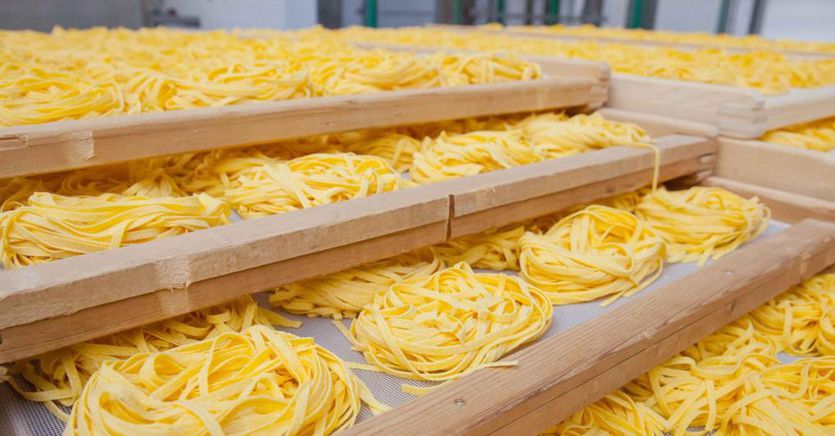The world is hungry for pasta, but Italy, the world‘s leading producer and exporter, risks running out of raw materials to feed the primary processing and pasta factories. In the last ten years, global pasta consumption has doubled to 17 million tons per year, as revealed by a survey by the Unione Italiana Food released in view of the World Pasta Day which is celebrated on Monday 25 October.
Despite the slowdown in exports in the first part of 2021 after the record of 2020, Italy remains – obviously – the world reference point for production (3.9 million tons), exports (2.4 million tons) and consumption. : every Italian eats over 23 kg per year, breaking off in this special (and somewhat surprising) ranking Tunisia (17 kg), Venezuela (15) and Greece (12). Even if demand is normalizing after the peaks of 2020 favored by the restrictions due to the pandemic, according to the survey by the Italian Food Union, in 2021 domestic consumption should settle on values in line with or higher than in 2019.
Exports down in 2021 but + 13% compared to 2019
On the other hand, as mentioned, exports set the pace in 2021. After years of uninterrupted growth that led the sector’s foreign turnover to exceed 2.3 billion in 2020, in the first 7 months of the year shipments dropped by more than 10% in value and 18% in quantity, but the comparison with the pre-Covid values of the same period of 2019, however, shows a growth of 13%, confirming a settlement in a framework of general structural growth. One in four pasta dishes in the world is Italian and over half (62%) of national production ends up abroad. The main customers are confirmed by Germany, the United Kingdom, the United States, France and Japan, five countries that alone absorb more than half of exports, while the fastest growing markets are China, Canada, Spain and Saudi Arabia.
A primacy that Italian pasta makers defend by investing in innovation: the 120 companies in the sector (which employ over 10 thousand employees and generate value for about 5.6 billion) invest on average 10% of their turnover in research and development to make more sustainable plants and intercepting new trends. Alongside the classic pasta, which represents 90% of the market with over 300 different formats, consumer preferences are growing for wholemeal, gluten free, those with alternative flours and legumes, up to the latest innovation in pasta made with the printer. 3D. With an increasingly marked sensitivity for 100% Italian wheat packages, less sought after abroad where the Italian character of the brand counts more.
The reorganization of the large pasta factories
The liveliness of the global market is also confirmed by the ongoing reorganization of the large pasta factories. By the end of the year, the acquisition of the historic French brand Panzani by the British private equity fund Cvc Capital Partners from the Spanish food multinational Ebro Foods (owner of the Garofalo brand), for 550 million euros, is expected to close. Just Ebro Foods sold its activities in Canada for the production and marketing of dry pasta under the “Catelli” brand for 100 million to the Barilla group, which in turn, at the beginning of 2021, acquired the majority of Pasta Evangelists, a premium English brand specialized in online sales of fresh pasta.
